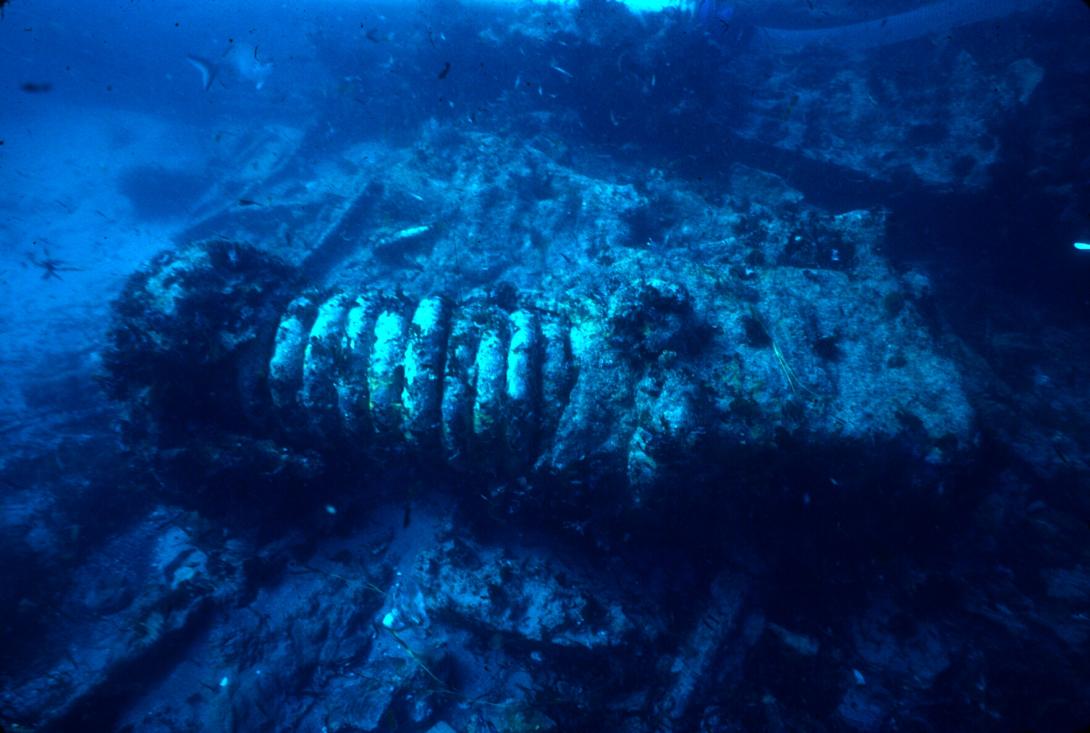
Mystery Artefact
Chaplin water distiller
When excavating the SS Xantho wreck site, WA Museum divers recovered a long, coiled copper pipe.
Initially, they thought it was part of an engine steam condenser. These were typically found on steam vessels of the time and most drawings of trunk engines showed a condenser attached. However, some expected parts were missing, and it didn’t resemble the contemporary condensers that would have been suitable for use on a vessel like Xantho.
The team explored a second theory: that Xantho had a simple, non-condensing engine, and the coil apparatus was a boiler feed water heater. Cold sea water would have been used to fill the boilers, so a feed water heater could increase boiler efficiency by heating up sea water before it was fed into the hot boiler.
Discovery of the maker’s name plate during conservation treatment, followed by archival research, revealed the artefact to be a freshwater distiller made by Alexander Chaplin & Company. It is the only known surviving example of a Chaplin’s Patent Distiller, making it a rare industrial artefact from the mid-1800s.

Chaplin distiller on the Xantho wreck site, 1983. Jon Carpenter, WA Museum, XA/A/53
Part of the distiller’s copper condensing pipe. Western Australian Museum.
Alexander Chaplin & Company’s name plate found on the distiller during conservation treatment. Western Australian Museum.
How did it work?
Alexander Chaplin & Company’s (1857-1932) patent distilling apparatus used steam to distil sea water into fresh water. In an hour, it could produce about 87 litres of fresh water, providing drinking water for workers and possibly water for the boiler. Housed inside a cast-iron casing, a long, coiled copper condensing pipe was filled with steam from either the engine exhaust or directly from the boiler. At the same time, sea water was pumped into the casing to act as a coolant. This caused the steam to cool and condense into freshwater droplets on the inside walls of the pipe. The water droplets then drained to the bottom of the pipe to collect in a tank, ready for use.
Alex Kilpa reconstructing parts of the distiller in the Xantho gallery, 2014. Patrick Baker, WA Museum.

Chaplin distiller in a showcase
WA Museum